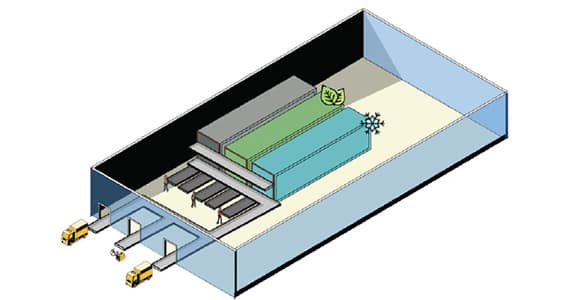The challenges
Faced with this enthusiasm, retailers are having to deal with increasing competition, as each brand is now offering a range of online services. To stand out and meet the growing demands of customers, it is essential to focus on quality of services, lead times, product availability and high flexibility with collection slots.
The aim ? A faultless customer experience, to retain as many versatile and quality-conscious users as possible. These performance levers require appropriate logistics solutions, supported by automation designed for each type of platform.
There are many possible ways to organize the supply chain, that adapt, above all, to the operational constraints of the distribution points: available surface area, picking method, possible pick-up methods, etc. The ambition to gain market share, by densifying the territorial network and multiplying proximity points, must not escape the rational aim of balance between optimizing real estate, logistics, transport and staffing costs. The industrialization of order picking is an essential major variable in this equation. Two main models exist, and may co-exist within the same organization, depending on the site for fulfilling customer orders:
- Order picking in a central warehouse, with the setting up of frequent deliveries to distribution sites.
- Localized order picking, on a dedicated site or attached to an existing point of sale.








